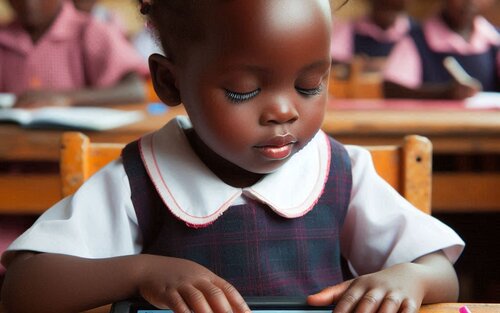Assistive Technologies for the Deafblind
Assistive technology plays a crucial role in enhancing the quality of life for persons who are deafblind. This group of individuals faces unique challenges due to the dual sensory loss, but with the right tools and support, they can lead more independent and fulfilling lives.

A Deaf and Blind girl working on computer
Understanding Deafblindness
Deaf-blindness is a combination of vision and hearing impairements that significantly affects communication, mobility, and access to information. Individuals with this disability often require specialized tools and services to navigate their environment and interact with others effectively.
Key Assistive Technologies for Persons Who Are Deaf-Blind
Braille Devices
-
Braille Displays and Notetakers: These devices translate text from a computer screen into braille, allowing users to read and write. Popular models include the Perkins Braille Notetaker and the Orbit Reader.
-
Braille Embossers: These machines print braille text on paper, enabling individuals to read printed materials.
Screen Readers
-
JAWS (Job Access With Speech): A widely-used screen reader that provides speech output for computer text. It is compatible with most Windows-based applications.
-
NVDA (NonVisual Desktop Access): A free, open-source screen reader that also offers braille display support.
Haptic Feedback Devices
-
Haptic Gloves: These gloves translate digital information into tactile feedback, allowing users to receive messages through vibrations or touch patterns.
-
Haptic Communication Devices: Devices like the Braille Glove convert text into braille patterns that can be felt on the hand.
Assistive Listening Devices
-
Hearing Aids and Cochlear Implants: While these may not restore full hearing, they can amplify sounds and improve the ability to hear.
-
Vibrating Alert Systems: These systems connect to doorbells, alarms, and other devices, providing alerts through vibrations.
Communication Apps
-
Text-to-Speech Apps: Apps like Proloquo4Text and LetMeTalk convert text into speech, helping individuals communicate verbally.
-
Video Relay Services: These services use sign language interpreters over video calls to facilitate communication between deaf-blind individuals and others.
Acquiring Assistive Technologies in Kenya
-
Local Organizations and NGOs
-
Kenya Society for the Blind (KSB): KSB offers support and resources for individuals with vision impairments, including assistive technology solutions.
-
-
Government Programs
-
The Kenyan government, through the National Coouncil for Persons with Disabilities, NCPWD provides assistive devices and resources for persons with disabilities. Inquire about available assistive technologies and funding options.
-
-
International Organizations
-
The Perkins School for the Blind often collaborates with local entities to provide assistive technologies and training.
-
-
Retailers and Online Stores
-
Some assistive technologies can be purchased from specialized retailers or online platforms such as Amazon, eBay, and specialized disability technology stores. Ensure that the devices meet your specific needs and are compatible with other tools you use.
-
-
Training and Support
-
Acquiring the technology is just the first step. It is crucial to receive proper training on how to use these devices effectively. Some organizations, including Kilimanjaro Blind Trust, offer training programs and workshops.
-
Assistive technology is a powerful enabler for persons who are deafblind, offering them greater independence and improved quality of life. In Kenya, various organizations and resources are available to help individuals acquire these technologies. By leveraging these tools, persons who are deafblind can overcome many of the barriers they face and lead more connected and empowered lives.
Article by: Emomeri Maryanne
